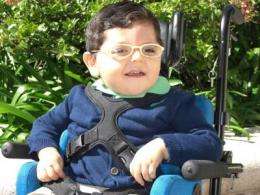Novel 'medical home' program for pediatric patients, families cuts ER visits in half

For parents of children with multiple medical problems, keeping up with countless doctor's appointments, ongoing tests and a variety of medications can be overwhelming, especially for those in challenging socioeconomic situations.
As a result, families often wind up using the emergency room, the country's most expensive form of care delivery, to get help for their kids.
But a growing concept in health care reform called the "medical home" offers parents a way to simplify, organize and coordinate the complexities of their medically fragile child's health care needs. The medical home is not a location but an approach to care coordination designed to provide a constant trusted source of care, typically by a general pediatrician.
In the first quantitative study to look at the benefits of utilizing the medical home concept in a resident-education outpatient clinic at a specialized children's hospital, UCLA researchers found that participation in the program at UCLA significantly reduced families' use of the emergency room. The findings appear in the March 11 online edition of the peer-reviewed Journal of Pediatrics.
The medical home program at UCLA follows guidelines established by the American Academy of Pediatrics and includes four basic components: a formal 60-minute intake appointment, follow-up appointments of 40 minutes (twice the length of standard appointments), access to a bilingual family liaison to help families navigate the medical system, and a family binder that keeps all a child's medical information in one place.
The UCLA study, in addition to examining the program's effect on emergency room visits, focused on the need to train future pediatricians — those who are now medical residents and
students — in the principles of the medical home and found this could also be done successfully.
"While the medical home concept has been shown to be effective in community pediatric practices, it has not been a standard part of the educational curriculum for our country's future pediatricians," said lead study author Dr. Thomas Klitzner, chief of the UCLA Division of Pediatric Cardiology and executive director of the medical home project at Mattel Children's Hospital UCLA. "We set up a pilot program within our outpatient pediatric resident teaching clinic to develop a working model while building the required curriculum. We were pleasantly surprised to learn that we could run an effective program in a teaching clinic and create medical efficiencies that decreased the overall cost of medical care by reducing emergency department visits."
Study data was collected between 2004 and 2007 from the Pediatric Medical Home Project at UCLA for Children With Special Healthcare Needs, which was founded at Mattel Children's Hospital UCLA in 2003. Researchers examined emergency room, urgent care and inpatient encounters for 30 medical home patients for one year prior to enrollment in the program and for one year after enrollment. They found that among program participants, emergency room visits decreased by 55 percent.
"This positive effect was expected, because the medical home model stresses the importance of continuous, accessible outpatient care," said Klitzner, who holds UCLA's Jack H. Skirball Chair in Pediatrics. "The parents told us that they felt empowered by the pediatric residents, supervising faculty and medical home staff to use scheduled outpatient primary care and specialty visits rather than using the emergency department to get care."
Despite the decrease in emergency room visits, the study data showed no significant change in urgent care visits or hospital admissions, suggesting that the patients' overall burden of illness was not decreased during the study period. There was a trend toward greater use of scheduled outpatient appointments, which may have resulted from the program's emphasis on coordinating all of the care required by patients.
Plans for future research include studying parent and patient satisfaction and developing a model for delivering care according to medical home principals to a larger number of children with special health care needs.















